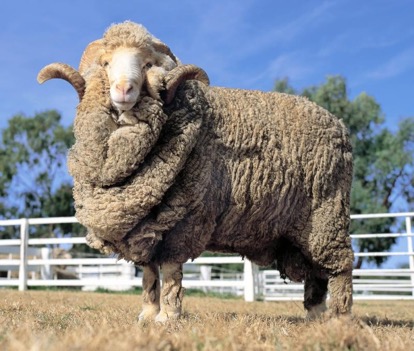Good Reasons On Deciding On Bamboo Clothing
Wiki Article
What Makes Yak Wool Merino Such A Popular Choice As A Base Layer For Winter Sportswear?
Merino's and Yak wool characteristics creates an excellent base layer very effective in winter sports apparel. Its hollow fibers trap the air, resulting in an excellent insulation. The fabric, when paired with Merino Wool, also an excellent insulator, offers excellent warmth that keeps the body warm in cold temperatures.
Merino wool can handle moisture by wicking it away from your body. Yak wool is water-wicking, and is a perfect match for merino wool. This combination helps regulate the body's temperature, keeping moisture from the skin while exercising vigorously in winter.
Merino's softness, and its fine fibers that are less likely to cause skin irritation. When paired with yak wool, which also has soft and silky fibers, the resultant fabric is comfortable against the skin.
Odor Resistant- Merino and Yak wool have antimicrobial qualities that help to prevent the growth of bacteria that cause smells. This makes the garments fresher longer, even after prolonged wear.
Durability- Yak wool is extremely strong and durable. When it is combined with the power of merino wool it produces a fabric which can stand up to wear and tear that is associated in outdoor sports and activities.
Temperature Regulation Yak merino base layers regulate the body's temperature by keeping your body warm during cold weather conditions. They also have breathable properties to help prevent overheating when performing intense activities.
Merino wool or yak wool as well as other biodegradable and renewable fibers are sustainable and eco-friendly for winter sportswear.
Yark merino wool base layer is a blend of warmth, comfortability, the ability to manage moisture and durability. It is perfect for winter sports in cold temperatures. Follow the best merino wool base layer for website recommendations including smartwool merino 250 bottoms, icebreaker baselayer, best wool base layer, smartwool thermal underwear, long johns for skiing, sweaty betty ski base layer, smart wool baselayer, merino wool long johns, best long underwear for skiing, best long underwear for skiing and more.

What Are The Advantages Of Wearing Bamboo Clothing As Outdoor Clothing For Warmth, Comfort And Sustainable?
Bamboo clothing offers many advantages in terms of durability and comfort for outdoor winter clothes.
Bamboo fabric is known to be smooth and soft. It's soft to the skin. Bamboo fabric is frequently compared in terms of luxury to silk and cashmere.
Bamboo fibers are wicking moisture that is to say they draw water away from your skin to keep your skin dry and comfortable.
Thermal Regulation- Bamboo clothing has natural temperature-regulating properties, providing warmth in winter while remaining breathable to prevent overheating.
Sustainability-
Bamboo is a sustainable resource. It is able to grow quickly without chemical fertilisers or pesticides. It is extremely renewable, which makes it an excellent choice for clothing.
Low environmental impact- Bamboo cultivation typically uses less water compared to traditional cotton farming, and does not deplete soil nutrients. Bamboo absorbs and emits more CO2 than other plants.
Protection for Outdoor Wear-
UV Protection Bamboo fabric is UV resistant and provides natural protection against harmful sun rays.
Bamboo contains an antimicrobial natural agent called "bambookun" that blocks the development and spread of bacteria that cause odors. It helps keep clothing fresher, particularly during outdoor activities.
Additional Benefits
Bamboo fibers are durable and resistant to wear, which makes them ideal for outdoor clothing.
Biodegradability: Bamboo clothes are biodegradable. It is able to decay naturally after the completion of its lifecycle, reducing its environmental impact.
In winter outdoor clothes, bamboo fabric provides an array of comfort, thermal regulation and moisture management as well as sustainability, which makes it a popular option for those looking for eco-friendly and performance-oriented clothing options. View the recommended great post to read on bamboo clothing for website tips including bamboo baby pajamas, bamboo yoga trousers, bamboo yoga wear, bamboo material clothing, bamboo ladies pants, bamboo chafing shorts, bamboo workout clothes, bamboo activewear, bamboo clothing leggings, checkered bamboo pajamas and more.

What Are The Differences Between Bamboo, Merino And Wool Clothes In Regards To Texture, Warmth And Moisture Absorbency?
In comparing wool traditional bamboo, merino and traditional wool in terms of water-absorption and warmth, their texture is vital.
Merino Wool Merino Wool, also known as fine-fibered wool is renowned for its more supple texture and soft fibers. It is thought to be more comfortable.
Bamboo ClothingBamboo fabric is silky and smooth, often compared to luxurious materials such as cashmere or silk. It's soft and smooth, which makes it comfortable to wear.
Traditional Wool: Traditional wool may vary in texture, some varieties may be more coarse and more prone to causing itching or discomfort compared to bamboo or merino clothing.
Warmth-
Merino- Merino offers exceptional warmth due to its insulation capabilities. It is a good insulation in cold temperatures and can retain warmth even in damp.
Bamboo Clothing is warm as well but isn't as insulate as Merino. It does however regulate body temperature well, providing comfort in various conditions.
Traditional Wool - Similar to merino, traditional wool is warm and is insulating. However, it can sometimes feel heavier or bulkier than bamboo or merino clothing.
Moisture Absorption-
Merino WoolMerino Wool Merino wool has exceptional water-wicking properties that pull moisture away from the skin while permitting it to evaporate. It remains warm even when damp.
Bamboo Clothing - Bamboo fabric may also absorb moisture, providing comfort for active people. It regulates moisture well while keeping the wearer dry.
Wool - Wool is a natural fiber that can take in moisture, but it may not be as moisture-wicking as bamboo or Merino. Certain kinds of wool feel damp or heavy when they are wet.
Merino wool is renowned for its softness, warmth and moisture-wicking abilities. Bamboo clothing is a soft texture and is warm, with good moisture control. Traditional wool could have a different texture, provide warmth and moisture absorption but feel heavier or coarser when compared with bamboo or merino clothing. Each material is unique and is suited to different requirements. Take a look at the best merino winter clothings blog for more tips including wool base layer, merino wool long underwear, merino wool layers, lightweight merino wool base layer, merino base layer, best layers for skiing, smartwool long sleeve shirt, smartwool 250 base layer, wool base layer mens, merino wool base layer clearance and more.
